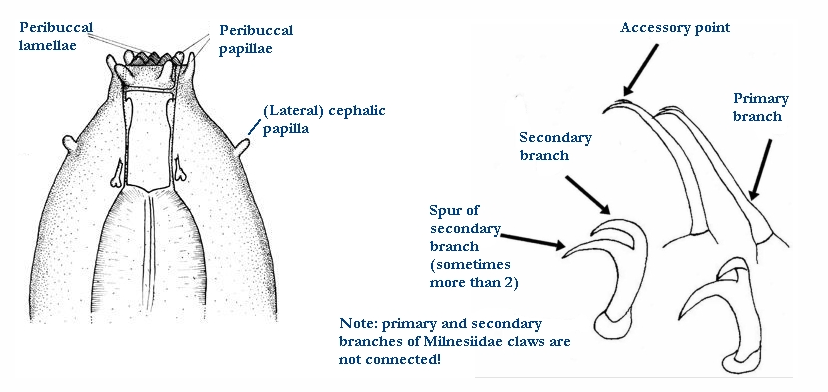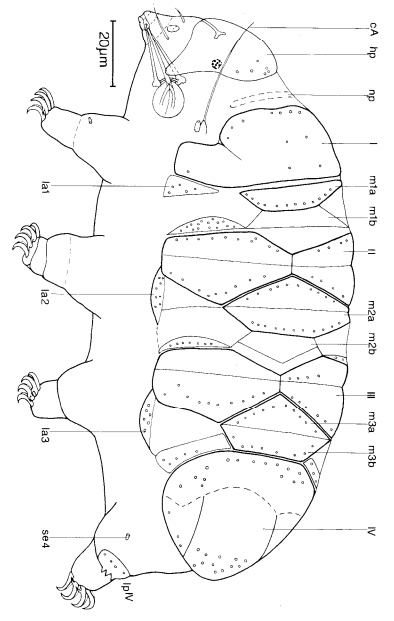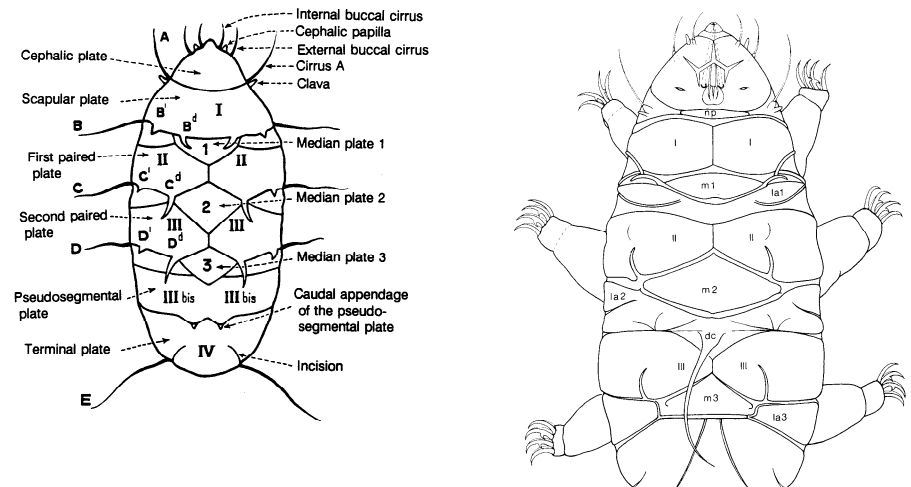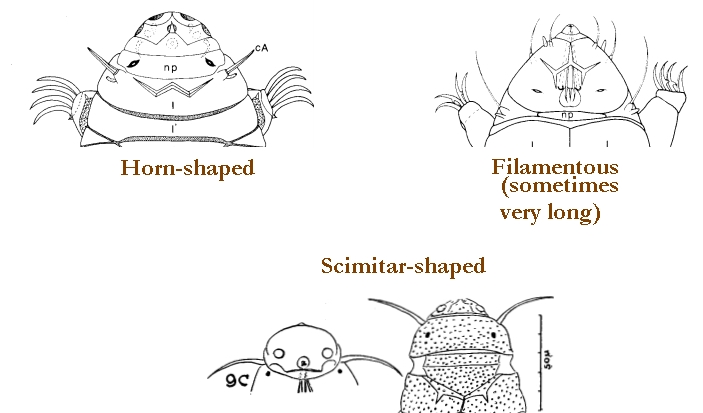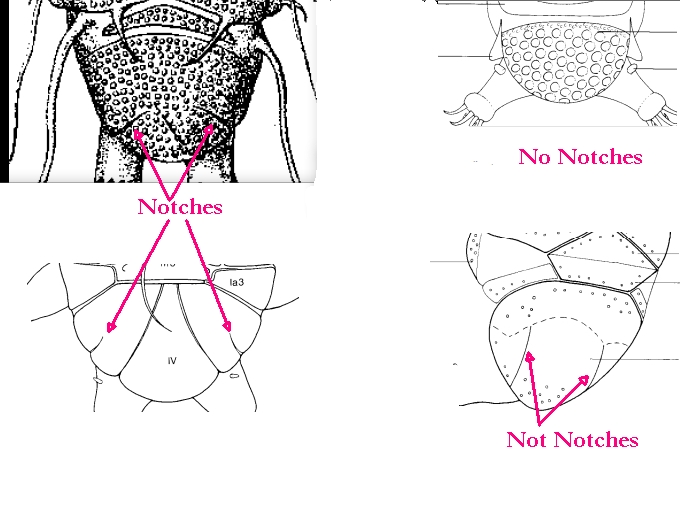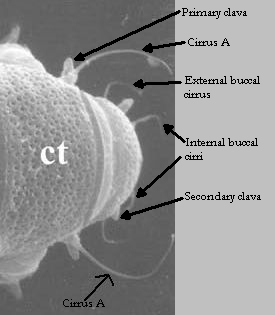“Eutardigrades with buccopharyngeal apparatus of Diphascon-type and anterior apophyses shaped as “blunt” or “semilunar” hooks (see Pilato 1987). Posteriodorsal apodeme (“drop-like” structure) present or absent, pharyngeal apophyses present. Asymmetrical claws of Hypsibiidae-type. Eggs either deposited into [shedded] cuticle and smooth or layed freely and with ornamented shells.” Dastych H. 1992. Paradiphascon manningi gen. n. sp. n., a new water-bear from South Africa, with the erecting of a new subfamily Diphasconinae (Tardigrada). Mitteilungen aus den Hamburgischen Zoologischen Museum und Institut. 89: 125-139.
“Buccal tube followed by an annulated pharyngeal tube, with a cuticular thickening between them (often drop-shaped, sometimes barely evident); pharyngeal bulb is an elongated oval, containing always 3 macroplacoids in a line (and sometimes with a microplacoid and/or septulum).” Bertolani R, Guidetti R, Marchioro T, Altiero T, Rebecchi L, Cesari M. 2014. Phyloeny of Eutardigrada: New molecular data and their morphological support lead to the identification of new evolutionary lineages. Molecular Phylogenetics and Evolution. 76: 110-126.
“…the morphological diagnosis of the subfamily cannot be applied in the classical identification of these tardigrades anymore. The affinity of specimens without placoids to the subfamily is possible only by DNA analysis.” Zawierucha K, Stec D, Dearden PK, Shain DH. 2023. Two new tardigrade genera from New Zealand’s Southern Alp glaciers display morphological stasis and parallel evolution. Molecular Phylogenetics and Evolution. 178: 107634. DOI: 10.1016/j.ympev.2022.107634





